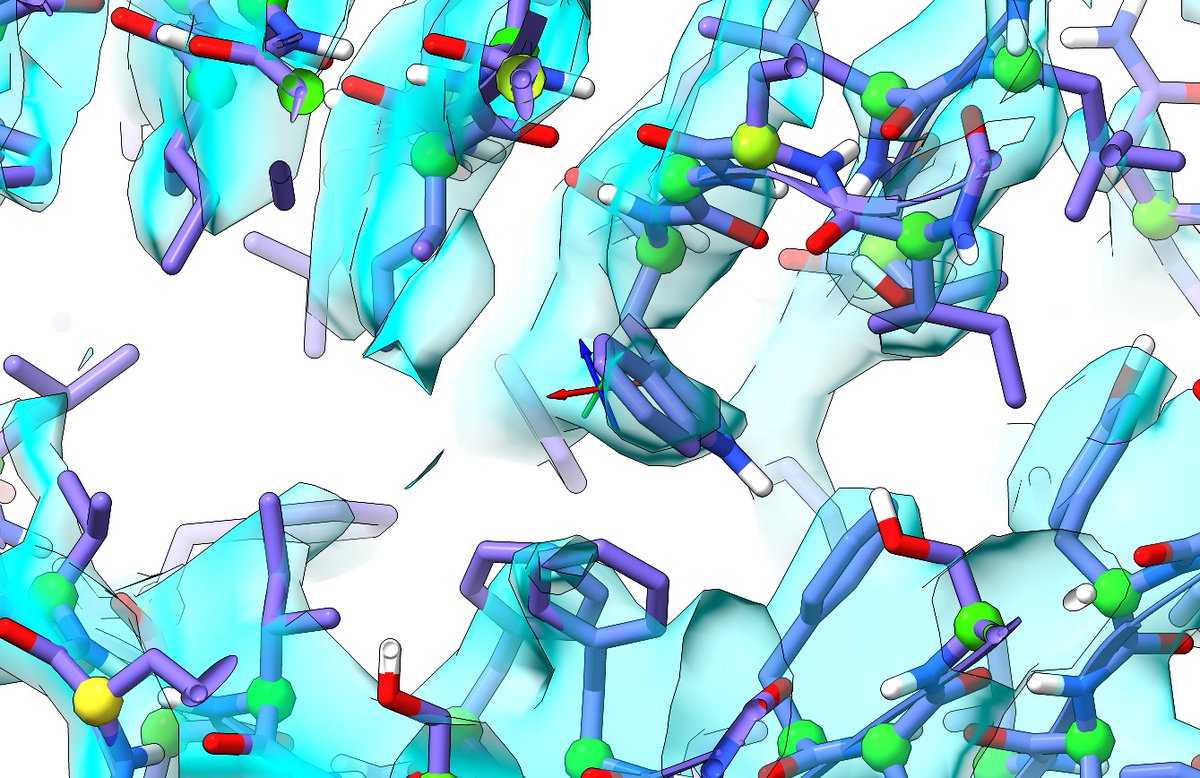
For your delectation: the Rhodobacter sphaeroides LH2 antenna complex at a glorious 2.1 Angstrom resolution. Building this one was an absolute joy, with maps (courtesy of new-to-Twitter @PuQian3) so good they almost felt like cheating! (1/7)
https://twitter.com/DavSwain/status/1453095353381707779
Remember the big RC-LH1 dimer complex from a few weeks back? These smaller LH2 complexes act as little satellites to that, increasing the light-gathering area and passing their excitation energy back to the LH1 complex. (2/7)
https://twitter.com/CrollTristan/status/1446857820175994889?s=20
My favourite part of this model was figuring out this site at the N-terminus of the alpha chain. Yes, that *is* the N-terminus. It's what's known as N-carboxymethionine, and it's what you get when nature desperately wants an acid but only has an amine to work with. (3/7)
This has been seen in this context once before in a related bacterium, in a crystal structure published back in 2003 (1nkz) - but its presence in Rba. sphaeroides was uncertain. Similar carboxylation of lysine sidechains also happens from time to time... (4/7)
It's a spontaneous, non-enzymatically driven post-translational modification - basically, the amine captures a carbon dioxide molecule to form the carbamate because that's what the local environment really "wants". (5/7)
It's also a beautiful example of a modification you'll (probably) only ever discover by capturing the structure experimentally. Since it's entirely environment-driven there's no sequence motif to look for; it decomposes in acid making it invisible to HPLC/MS... (6/7)
... but once you see it in the density it's really quite unmistakable (and beautiful). Anyway, for those still with me here's a fly-through of all residues in the beta chain (wireframe at 6.6 sigma, surface at 10 sigma). (fin)
*alpha chain. Sigh... I’m off to bed.
• • •
Missing some Tweet in this thread? You can try to
force a refresh






